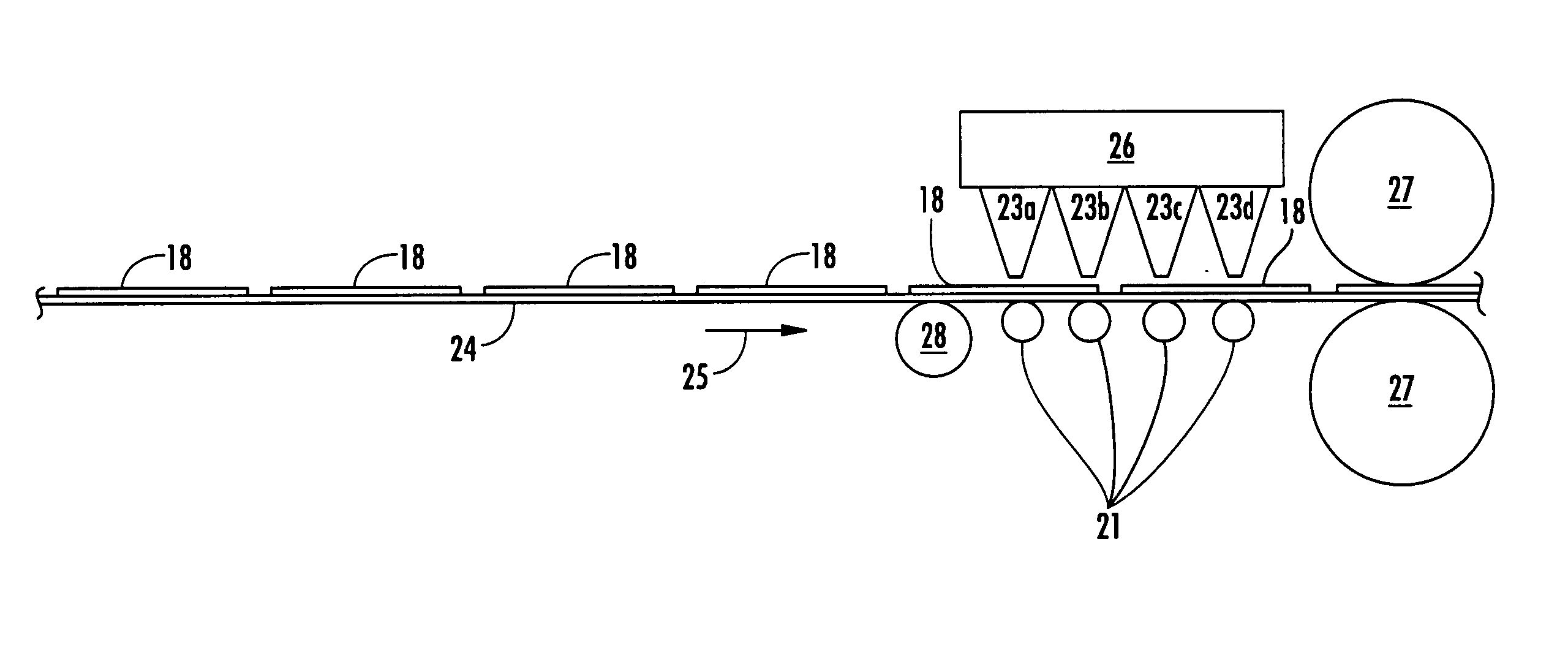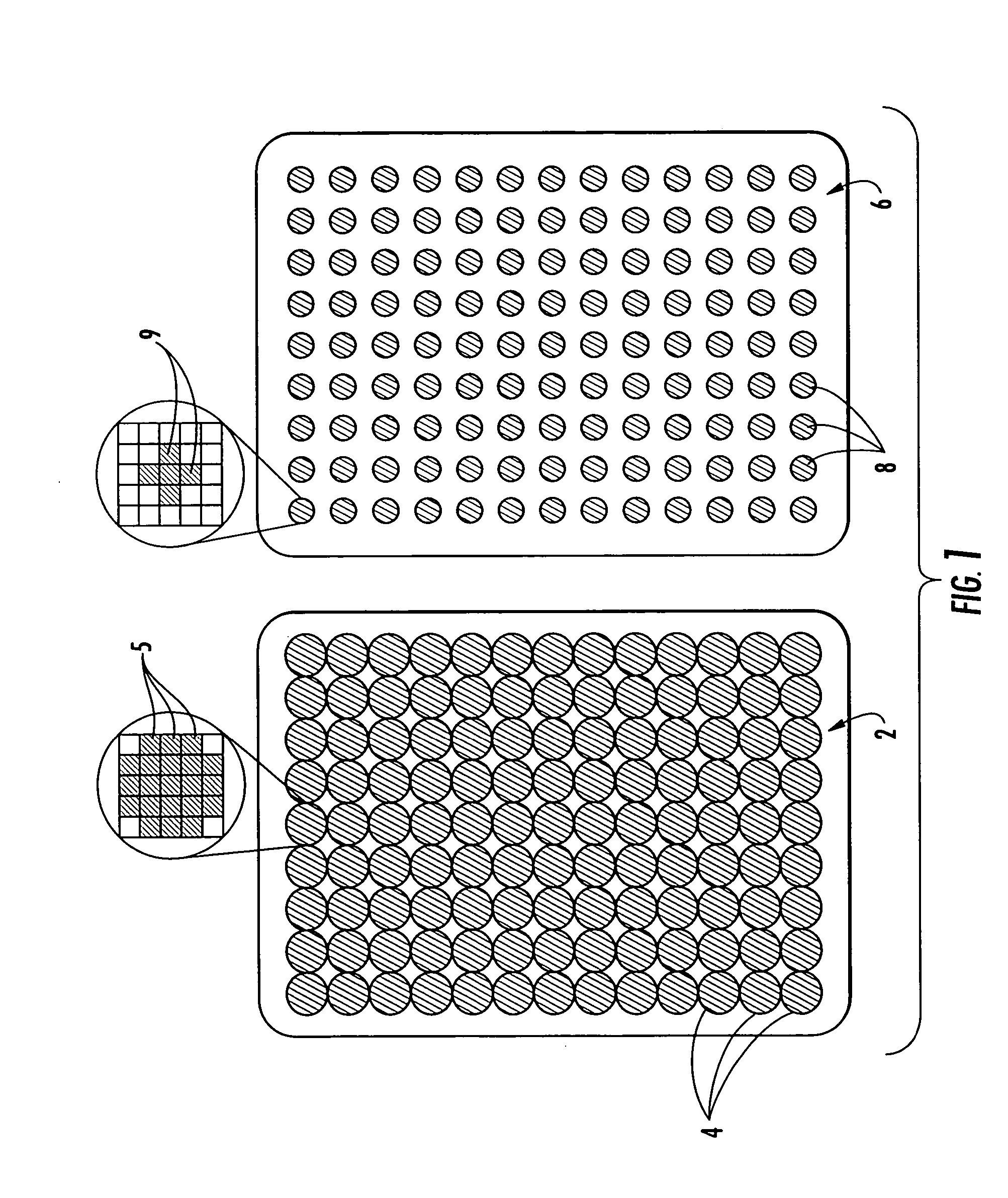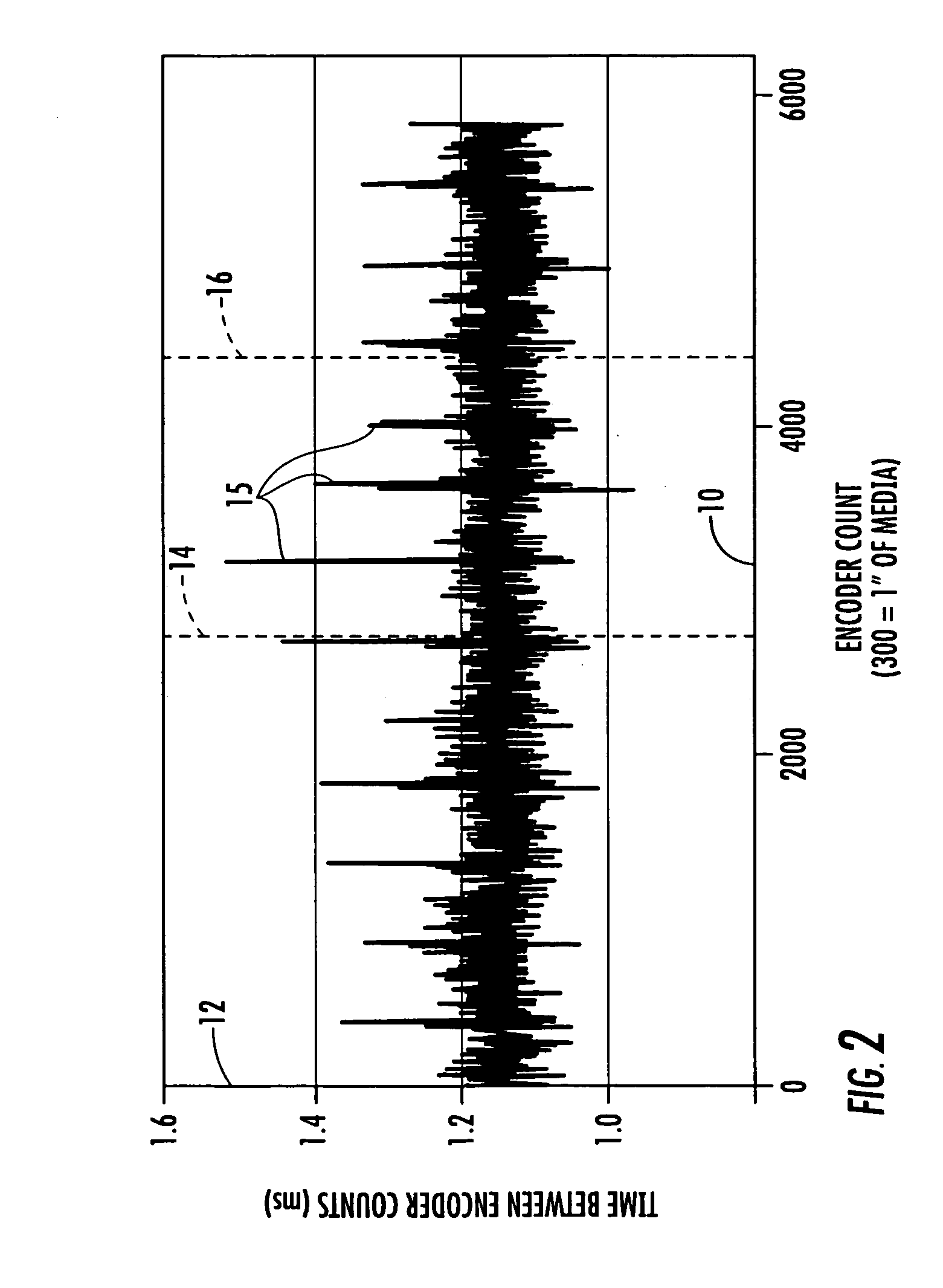Method of adjusting strobe length in a thermal printer to reduce effects of changes in media transport speed
a technology of thermal printers and strobes, which is applied in the direction of typewriters, printing, other printing apparatus, etc., can solve the problems of uneven transfer of ink from line, complicated process, and undesirable fluctuations in print head temperatures, and achieve uniform print density
- Summary
- Abstract
- Description
- Claims
- Application Information
AI Technical Summary
Benefits of technology
Problems solved by technology
Method used
Image
Examples
Embodiment Construction
[0028] Now referring to the drawings, the state of the present art and the principals of the present invention are shown and generally illustrated in the figures. As was discussed earlier, the present invention is directed to a thermal printing apparatus and a method of controlling a thermal printing apparatus in a manner that maintains highly consistent print density and thus provides improved print quality. FIG. 1 illustrates the general principals associated with thermal printing technology. Thermal printers include a limited number of available color ribbons from which to generate a printed image. Generally, these ribbons include the following colors: cyan, magenta, yellow and occasionally black. To create varying shades of these colors, or to create other colors, the printer utilizes various combinations of the available colors in varying intensities in overlying relation. Further, since only one shade of each color is available for use in the printer, the printer utilizes a pr...
PUM
 Login to View More
Login to View More Abstract
Description
Claims
Application Information
 Login to View More
Login to View More - R&D
- Intellectual Property
- Life Sciences
- Materials
- Tech Scout
- Unparalleled Data Quality
- Higher Quality Content
- 60% Fewer Hallucinations
Browse by: Latest US Patents, China's latest patents, Technical Efficacy Thesaurus, Application Domain, Technology Topic, Popular Technical Reports.
© 2025 PatSnap. All rights reserved.Legal|Privacy policy|Modern Slavery Act Transparency Statement|Sitemap|About US| Contact US: help@patsnap.com



